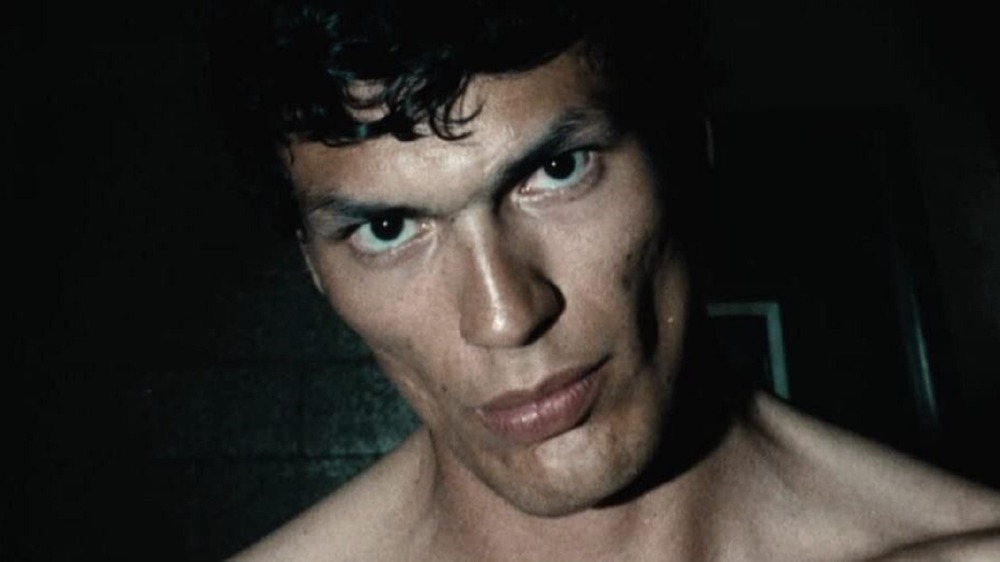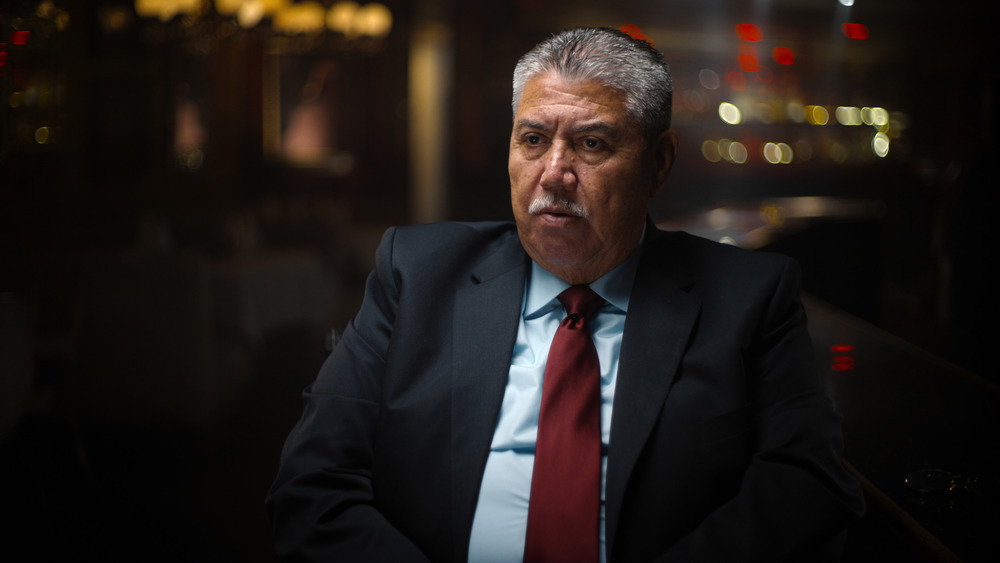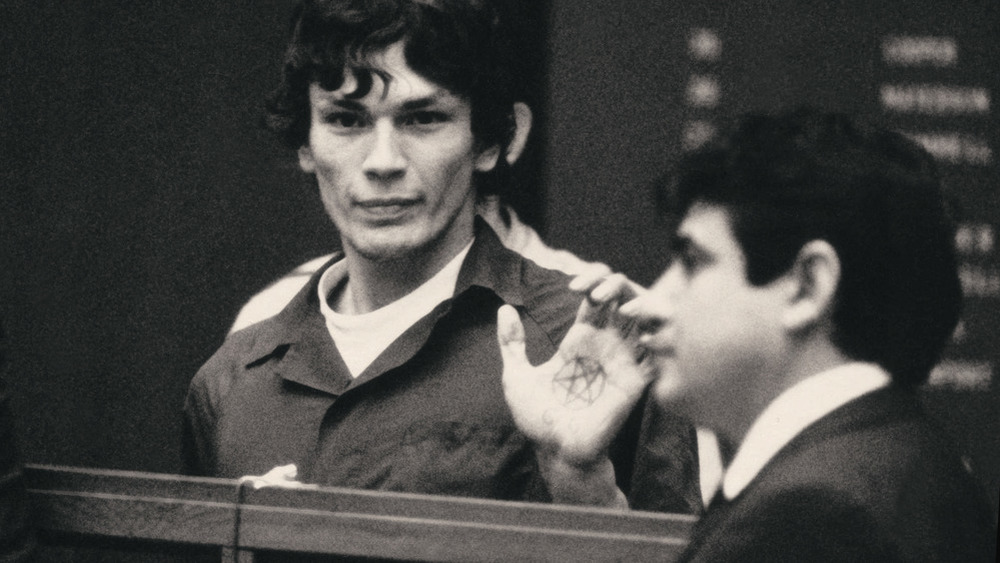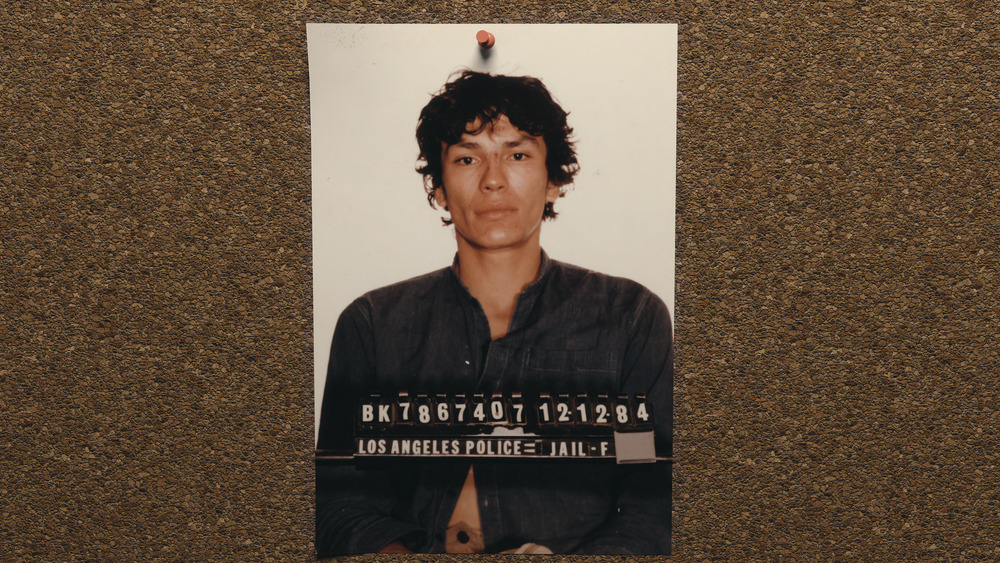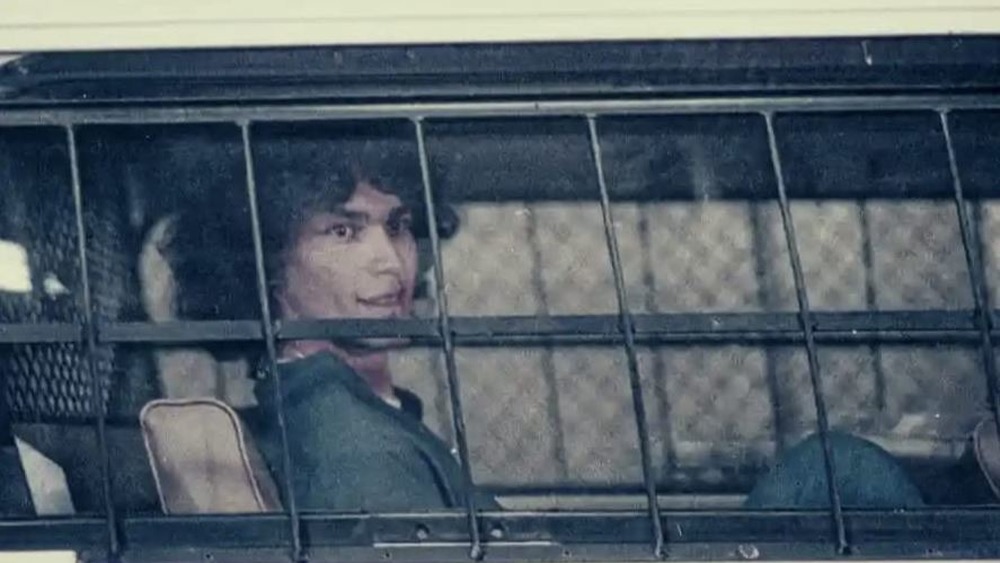Everything Netflix's Night Stalker Documentary Didn't Tell You About Richard Ramirez
Netflix is always a reliable haunt if you're on the lookout for a chilling tale or a good documentary. Now, you can get both at the same time, thanks to Night Stalker: The Hunt For a Serial Killer — a new true crime documentary miniseries about Richard Ramirez, AKA the Night Stalker. In 1984 and 1985, this prolific Los Angeles serial killer murdered people and committed all sorts of atrocious crimes. Apart from the fact that he invaded people's homes to kill them, he operated with a seemingly random pattern and no clear victim profile, putting every single person in the area at potential risk.
The documentary is a fairly grim affair, at times, because while it focuses on the police officers who eventually cracked the case, it also features interviews with Ramirez's surviving victims and rather graphic crime scene photos. However, it doesn't feature the killer himself in the kind of capacity that you might expect. The truth about the Night Stalker is even more messed up than most people can imagine, so it's hard for even the most dedicated documentary to convey the sheer amount of weirdness and terror in his story. As such, the Netflix documentary didn't manage to tell quite everything about the terrifying murderer.
Let's take a look at the things Netflix's Night Stalker documentary didn't tell you about Richard Ramirez.
The Netflix documentary deliberately underplays Ramirez to focus on the victims
There's a good reason why The Night Stalker: The Hunt for A Serial Killer leaves a lot of stuff about its titular villain out. According to The Guardian, leaving Ramirez on the sidelines was a deliberate decision, and director Tiller Russell's goal was to focus on his victims and the law enforcement officials chasing him, thereby making sure the killer himself wouldn't be lifted on a pedestal.
This is a pretty understandable and refreshing take on Ramirez, considering that the serial killer has been portrayed as a fairly charismatic figure in pop culture works like 2016's The Night Stalker (in which Ramirez was portrayed by Lou Diamond Phillips) and two different seasons of American Horror Story (as portrayed by Anthony Ruivivar and Zach Villa, respectively). Though this means that the documentary doesn't tell his entire story and opts to leave certain particulars out, it does succeed in turning the focus toward the people his twisted actions affected.
Ramirez's early years were difficult and primed him for later trouble
The Night Stalker's childhood is briefly touched upon in the Netflix documentary, but it doesn't really focus on the killer's formative years. Ramirez grew up in El Paso, Texas, and may have had congenital disabilities, possibly thanks to his mother's job that exposed her to dangerous chemical fumes. His youth was a string of bad influences, from an abusive father to an older sister's peeping tom husband. Perhaps the biggest and worst influence on young Richard was his Vietnam veteran cousin, Miguel, who freely shared tales and images of his various wartime atrocities, and ultimately murdered his own wife — while the 12-year-old Ramirez was present. Miguel was the one who taught him to move stealthily, as well.
Ramirez' experiences led him down a darker and darker path, and he graduated from breaking and entering to assault, from dropping out of school to escalating drug use and self-styled satanic beliefs. Still, while all of this is highly tragic, it's no excuse for becoming a serial killer. The documentary ends with Ramirez asking: "Is there such a thing as a bad seed when a baby is born? Is he already a serial killer, already made, or is he created?" Considering that the series doesn't want to "glamorize" the man, it may strike as strange that it nevertheless allows the Night Stalker to muse on whether his past "created" him, or if he was evil form the beginning.
The Night Stalker documentary glosses over the social aspects of the case
As Digital Spy points out, Ramirez committed his crimes at the height of the "Satanic Panic" days of the 1980s, when America was convinced that all sorts of cultists ran around committing terrifying, ritualistic crimes in the name of the devil. Ramirez, a self-described satanist, hit this nerve with his pentagram imagery and murderous nature, which helped him become an "otherworldly" bogeyman with an air of ominous mystery. The Netflix documentary fails to note the social context the era's Satanic Panic brought to this reputation, and its decision to keep Ramirez at an arm's length arguably ends up adding to the mystery — especially since the documentary doesn't even name the man until its final episode.
In reality, of course, Ramirez was less a mysterious vessel for dark spirits than he was a violent serial killer whose crimes had a sexual motive, and whose mind had jumbled murder and sex into the same context. Which is, of course, also terrifying, but at least far more human than his horror movie monster reputation.
The documentary ignored Richard Ramirez's later years
With its focus firmly on the Night Stalker crimes, Night Stalker: The Hunt For a Serial Killer only briefly mentions that Richard Ramirez may have committed numerous other atrocities outside the Night Stalker crimes — and it doesn't really go into what happened to the man during his later life in prison. Q.V. Hough of Screen Rant suggests this might be another example of the documentary's attempt to avoid putting Ramirez on a pedestal, but also points out that the audience remains woefully uninformed about Ramirez in his later years, and what he thought of his numerous crimes as an older man.
Granted, it may be understandable why the documentary left out this part, because it's pretty hard to avoid sensationalizing the later stages of the Night Stalker. Ramirez had hordes of groupies who bombarded him with attention and letters, and he even married a fan in 1996. Eventually, he became something of a hermit, and in 2013, he died of blood cancer after a period of ailing health that at one point reportedly turned his skin green. He was only 53 at a time, according to The New York Times, and a bunch of his appeals were still pending, so one could imagine that he didn't regret his actions all that much.
